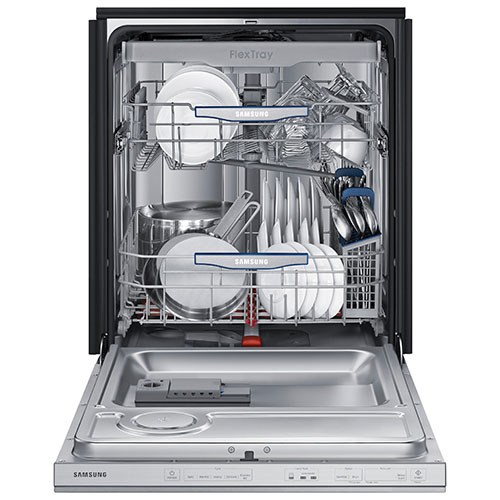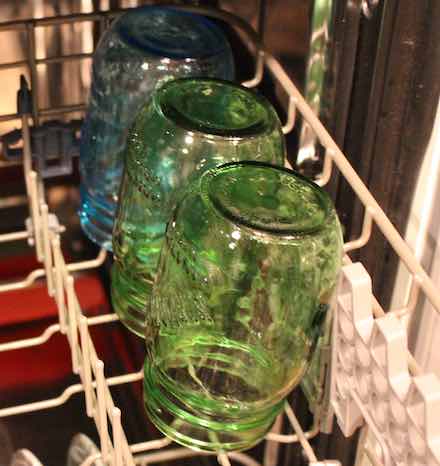 How often do you read the manual for the appliances you buy? When it comes to major appliances like refrigerators, ranges, and dishwashers, I’ll admit, I don’t normally crack the booklet. Unless something goes wrong with the appliance, I usually don’t find the need to.
How often do you read the manual for the appliances you buy? When it comes to major appliances like refrigerators, ranges, and dishwashers, I’ll admit, I don’t normally crack the booklet. Unless something goes wrong with the appliance, I usually don’t find the need to.
But when it comes to dishwashers, that manual can be a goldmine. It doesn’t just tell you how to install the dishwasher, run it for its wash cycles, or how it works to clean and sanitize the dishes: the manual tells you how to load your dishes for the best results, and that’s an amazing thing.
If you popped into the kitchens of random people you’d probably see that they load their dishwashers differently, but there is a standard way you can load your dishwasher to get the cleanest dishes. Here’s how:
Step one
Clean any excess food off your plates, bowls, and glasses. New dishwashers don’t require that you rinse your dishes first as they’re powerful enough to blast off tiny particles, but if you have large chunks of food you’ll want to scrape your plates and bowls.
Step two
Let’s start with plates.
Plates belong on the bottom rack of your dishwasher, and there are slots on the bottom to hold them. If you have a dishwasher that has an arm at the bottom, insert your plates so they all face toward the arm. If you are putting both large and small plates inside the dishwasher, alternate each plate between big and small.
Step three
Glasses are put on the top rack of the dishwasher. There are rows on the top to let you line your glasses up and hold them in place, and you can start on one side to fill a row, and then go over to the other to fill that row.
You can put your glasses right over one of the dishwasher rungs to hold them in place, and that way you don’t have to worry about them bumping or chipping during washing.
If you’re washing wine glasses, you can use the plastic safety rack on the top rack to hold them in place so they don’t fall over and break.
 Step four
Step four
I’ve always put my bowls on the top rack of my dishwasher, and there are spaces designated for bowls. You can line them up one on top of the other if you have a lot of bowls, or place them facing outward and line them up like glasses. Positioned this way they get the maximum spray from the jets.
Step Five
Once you’ve loaded your plates, glasses, and bowls, you can move onto large items.
Cutting boards, pots, and pans all belong on the lower rack of the dishwasher. If your dishwasher is like my Samsung Tall Tub, you can fold down some of the lower rungs to accommodate large pots and pans. Large items can also be placed along the perimeter of the dishwasher on all sides.
Step Six
The last items to go into the dishwasher are utensils. Place knives face down into the baskets for safety sake. That way you won’t reach in and grab a blade when you’re emptying the dishwasher.

Forks, knives, and spoons can all face up toward the spray arm for best results.
Step Seven
Larger utensils like spatulas, slotted spoons, and anything extra can go on the top rack between your bowls and glasses. If you have a third rack, you can add your larger utensils that rack.
Once you’ve loaded your dishwasher, add your soap and you’re ready to hit the start button.
One other piece of dishwasher advice: don’t overcrowd your dishwasher. You might have a sink of dirty dishes you want to clean, but trying to pack them all in will only result in you having a few dirty dishes mingled with the clean.
Here’s a video showing you how to load your dishwasher.
If you’re in the market for a new dishwasher, take a look at all of dishwashers available on Best Buy right now.



